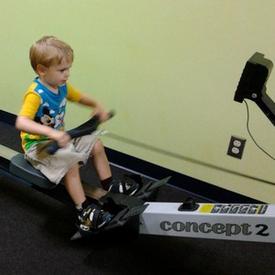Help!! Please explain terms like "Cut" and "Deficit"

kamaperry
Posts: 885 Member
"Reset" and not sure what else. Oh yeah, Macros. I feel like I am following this ok, but I get lost in some of the discussions!:bigsmile:
0
Replies
-
Cut and Bulk are taken from weight lifting nomenclature.
Cut is cutting fat to show off the muscle for show time. Looking cut, or ripped more recent term.
Bulk is adding muscle and fat to get bigger. Of course only muscle is desired, but impossible to not get some fat if trying to do this fast.
Lifters have determined it's faster to bulk and then cut later, than to do things with slow adjustments to avoid the fat gain at all.
Deficit is eating less than maintenance. So a diet is eating in deficit, or a cut.
Reset is stopping a diet (deficit/cut) and eating at maintenance so your body is totally unstressed by it, since a diet is a stress. Too much stress and hormones change and fight fat and weight loss.
Clean bulk is increasing muscle mass slowly trying to avoid as much as possible fat gain.
Dirty bulk is going for fast gain as max as possible, dealing with fat during the next cut. Usually involved eating anything to get calories up.
Clean eating is generally some form of non-processed food selection, but seems to be very opinion judgement.
Dirty eating is processed foods, or will include desserts - again based on opinion.
Macros is what makes up the vast majority of calories in food - carbs, protein, and fat. The other stuff is either classified under those really or very minor.
Your body needs protein and fat taken in, specifically a ratio of amino acids and complete set to get any usable protein out of it for use as protein, otherwise used for other things. Fat same thing, several essential fatty acids, plus fat-soluble vitamins, only way for them to be absorbed.
Carbs can be created by the body by converting protein, but slow ineffecient process compared to eating them.
Macro ratios refers to how many of your total calories eaten are supplied by a specific macro. Carbs and protein supply about 4 calories per gram, fat about 9 cal/gram.
So if you had a meal with 36 g carbs (144 cals), 28 g protein (112 cals), 12 g fat (108 cals), your ratio on that 364 calories is 40%, 30%, 30%.
Let's see, what else ....0 -
Wow thanks, Like being in a science class, very involved. I appreciate the info, having to wait till pay to buy the books, so this helps ALOT. THANKYOU!!:happy: :happy: :happy: :happy: :happy: :happy:0
-
There are some basic terms you need to understand to be able to figure the whole thing out. Among them are:
BMR
BMR is your basal metabolic rate. This is the minimum caloric requirement needed to sustain life in a resting individual. It can be looked at as being the amount of energy (measured in calories) expended by the body to remain in bed all day.
TDEE
TDEE is the common abbreviation for Total Daily Energy Expenditure which is a metric to calculate the amount of calories your body needs to function in a day (this includes your BMR as well as all daily activities including exercise). TDEE is also often referred to as "Maintenance". In theory, by eating at TDEE or Maintenance, you will neither gain nor lose weight, but maintain.
CUT & DEFICIT
These can be grouped together as they are sort of the same thing. Eating at a "cut" or "deficit" is simply eating less that your TDEE (or Maintenance). Generally, if all is calculated correctly, this will result in weight loss. The term "cut" generally refers to the percentage off of your TDEE (EM2WL generally recommends no more than a 15% cut)
RESET
Reset simply refers to eating at TDEE (aka Maintenance) for a period of time (EM2WL generally recommends 8 - 12 weeks) in an attempt to "Remind" or "Train" the metabolism of what "normal" is. If you have been eating a VLCD (very low calorie diet) for some time, the metabolism often slows down to compensate for the decreased intake. Eating at TDEE hopefully will result in speeding your metabolism back up. It's normal to gain a few pounds when you first go to TDEE, but your weight should stabilize somewhat over time. After your weight stabilizes and you have been at TDEE for the recommended 8 - 12 weeks, you can then go to the 15% "cut" and hopefully begin to see a loss. (This part often involves some "tweeking" to find your Sweet Spot...)
DIET BREAK or TDEE BREAK
Refers to taking a break from "cutting" and eating at TDEE for a week or two. The idea is that you are reminding your body of what its TDEE is, and not allowing it to think that your Cut is your TDEE. I Diet Break is generally recommended every couple of months, just to keep the metabolism revved up.
MACROS
Macros are what make up most foods: Carbohydrates, Protein, and Fat.
EM2WL recommends:
Carbs 40%
Protein 30%
Fat 30%
Hope that helps a bit - I tried to keep is simple, as all the "jargon" can be confusing at the beginning... :-)0 -
Thanks so much! So I am in the TDEE stage, have been for 2 weeks. Stay here and then I can "cut" after 8-12 weeks, right?0
-
Thanks so much! So I am in the TDEE stage, have been for 2 weeks. Stay here and then I can "cut" after 8-12 weeks, right?
Exactly! The longer you can stay at that TDEE the better - gives your body plenty of time to adapt and get used to that level. Just when you are really enjoying it and not mentally wanting to do that cut anymore, *that* is when you know you are ready!0
This discussion has been closed.

